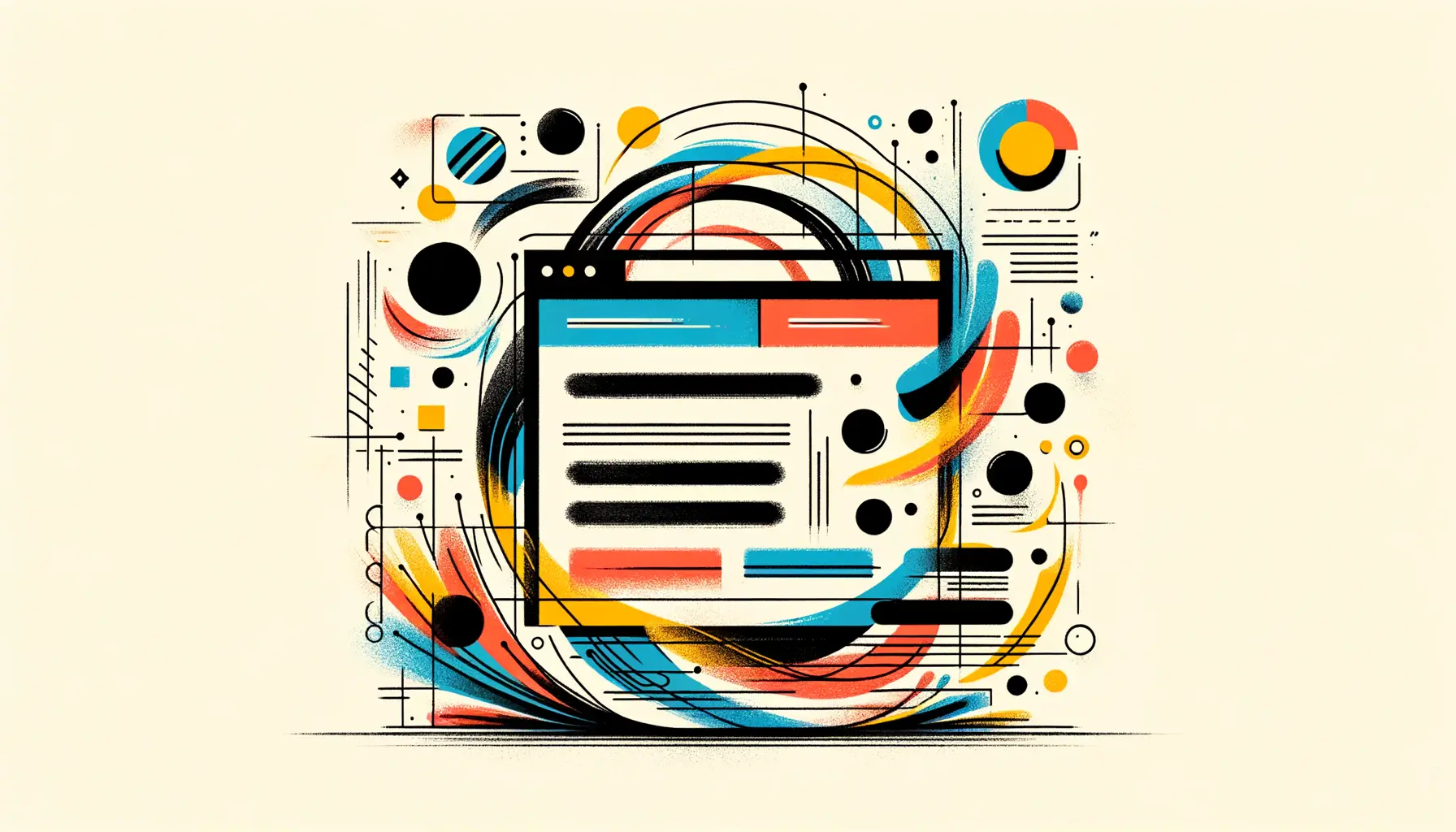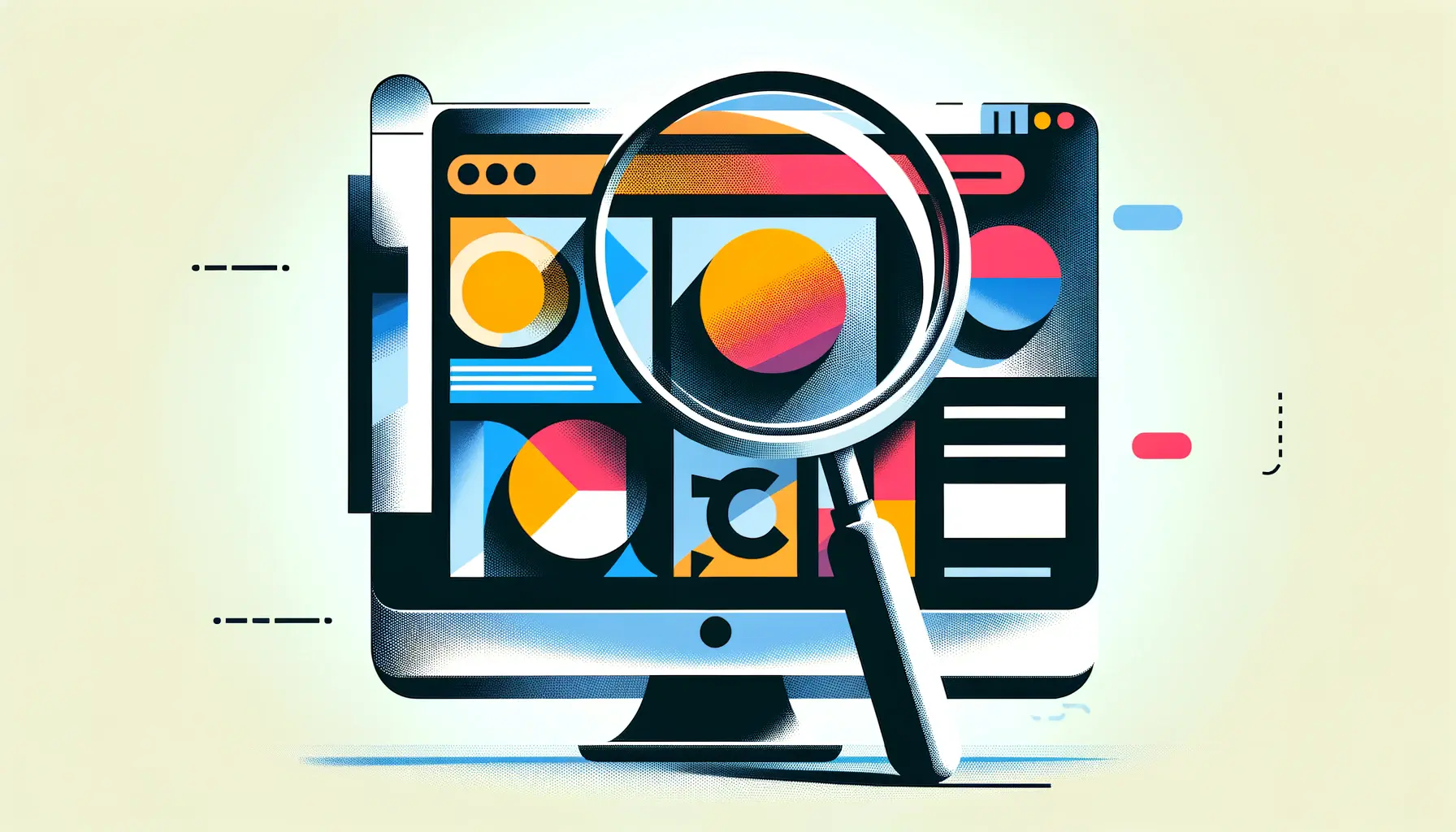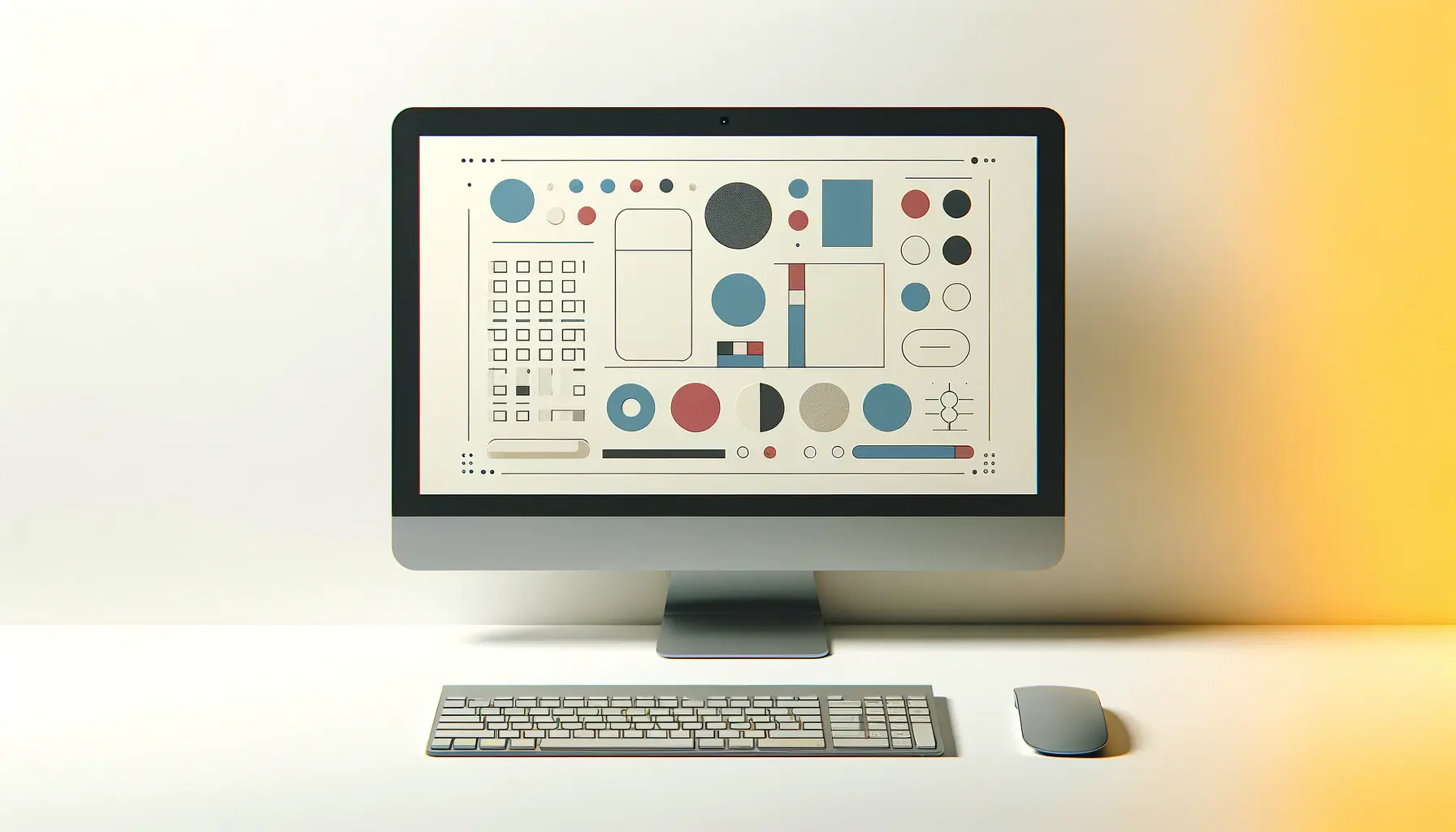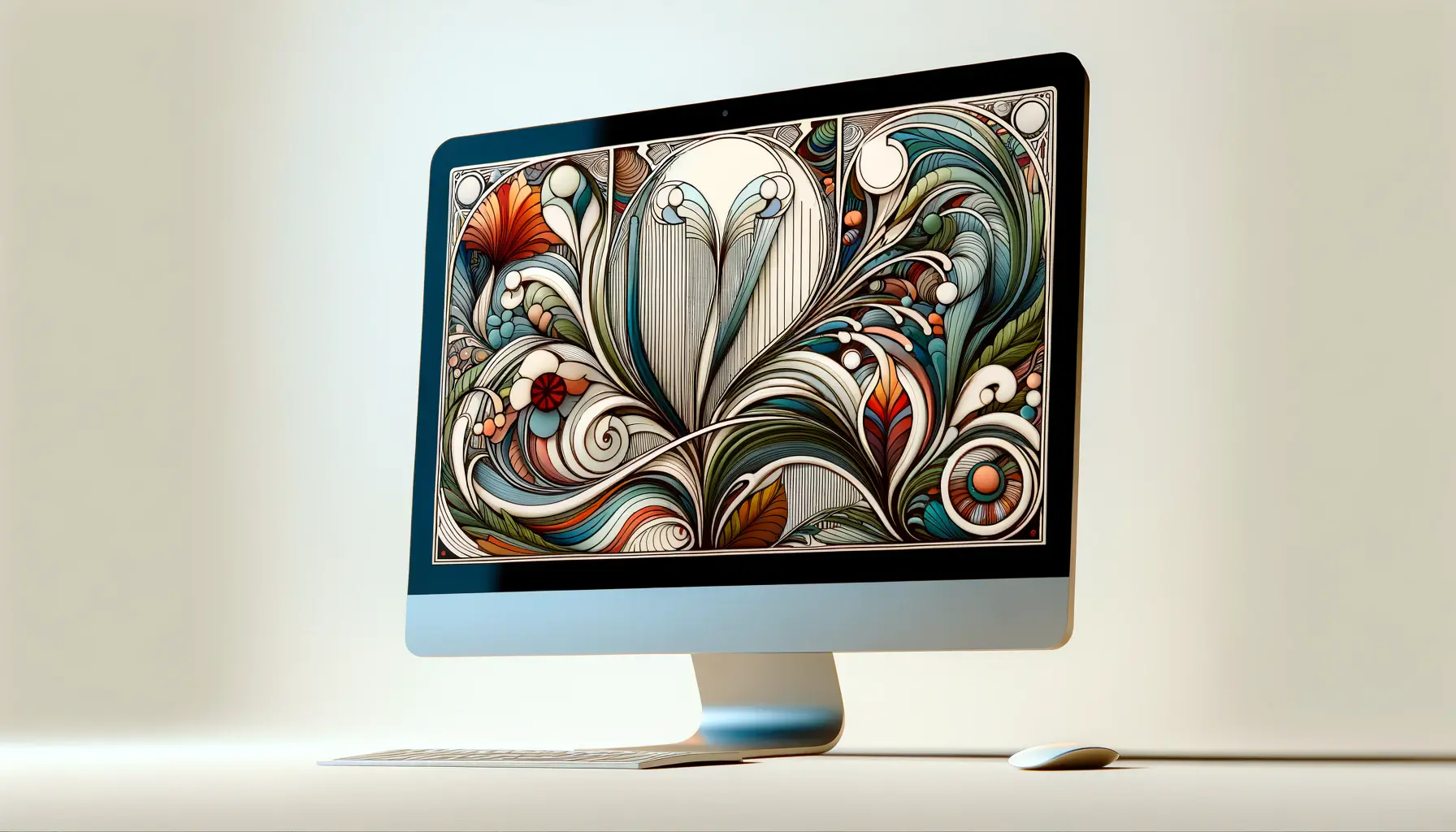The integration of scribble typography into web design has emerged as a distinctive trend, captivating both designers and audiences with its informal, creative flair.
This artistic approach to typography, characterized by its seemingly hand-drawn, doodle-like appearance, offers a unique avenue for brands and web designers to express personality and engage users on a more personal level.
However, the decision to incorporate scribble typography into a website’s design is not merely a creative one; it also entails a careful consideration of its implementation costs and the potential impact on the site’s overall functionality and user experience.
At its core, scribble typography challenges the conventional boundaries of web typography, inviting a blend of aesthetics and functionality that can significantly enhance a website’s visual appeal.
Yet, the process of integrating such a distinctive style into a digital platform involves a series of technical, design, and strategic considerations.
From selecting the right tools and resources to ensuring compatibility across various devices and browsers, the cost of implementing scribble typography extends beyond financial implications, encompassing time, effort, and the potential need for specialized skills.
- Understanding Scribble Typography
- Cost Factors in Implementing Scribble Typography
- Technical Considerations for Scribble Typography
- Best Practices for Scribble Typography Design
- Integrating Scribble Typography with Web Technologies
- Case Studies: Successful Scribble Typography Implementations
- Future Trends in Scribble Typography
- Embracing Scribble Typography: A Path to Creative Distinction
- Scribble Typography FAQs
Understanding Scribble Typography
What is Scribble Typography?
Scribble typography refers to a style of font design that mimics the irregular, unfinished look of handwriting or doodles.
Unlike traditional typography, which prioritizes readability and uniformity, scribble fonts are celebrated for their ability to convey emotion, creativity, and a sense of spontaneity.
This type of typography is particularly effective in projects that aim to evoke a playful, approachable, or artistic atmosphere, making it a popular choice among brands looking to differentiate themselves in a crowded digital landscape.
The appeal of scribble typography lies in its versatility and the personal touch it can add to digital content.
By breaking away from the clean lines and polished appearance of standard web fonts, scribble typography introduces an element of human warmth and authenticity.
This can significantly enhance user engagement, encouraging visitors to connect with the content on a more emotional level.
Benefits of Incorporating Scribble Typography
Incorporating scribble typography into a website’s design can offer several benefits, including enhanced visual interest and a stronger brand identity.
By utilizing a font that appears hand-drawn, websites can stand out from their competitors, offering a unique user experience that captures and retains attention.
Furthermore, scribble typography can be an effective tool in storytelling, helping to convey a brand’s personality and values through visual means.
Another advantage is the potential for increased engagement.
Websites featuring distinctive, eye-catching typography styles like scribble can encourage visitors to spend more time exploring the content.
This increased dwell time is not only beneficial for user engagement but can also positively impact a website’s search engine ranking, as search engines tend to favor sites that provide a compelling user experience.
The integration of scribble typography into your website can significantly enhance its aesthetic appeal and user engagement, offering a unique blend of creativity and personality.
Cost Factors in Implementing Scribble Typography
When considering the adoption of scribble typography for a website, it’s crucial to understand the various cost factors involved.
These costs can be broadly categorized into design, development, and licensing fees, each contributing to the overall expense of implementing this unique typography style.
Design and Customization Costs
The creation of custom scribble typography requires the expertise of skilled graphic designers or typographers.
Depending on the complexity of the design and the level of customization desired, the cost can vary significantly.
Designers may charge by the hour or offer a flat rate for the entire project, which includes:
- Initial concept development and sketches
- Digitization and refinement of the scribble font
- Testing for readability and web compatibility
- Revisions based on feedback and testing outcomes
This process ensures that the scribble typography not only aligns with the brand’s identity but also maintains functionality across different digital platforms.
Development and Integration Expenses
Once the scribble font is designed, integrating it into a website involves additional development work.
This may include:
- Custom coding to ensure the font displays correctly across all browsers and devices
- Optimization for load times to prevent any negative impact on the site’s performance
- Adjustments to the website’s layout and design to accommodate the new typography style
These technical steps are essential for maintaining a seamless user experience and ensuring that the aesthetic benefits of scribble typography do not come at the cost of functionality or speed.
Licensing Fees for Commercial Fonts
If opting for a pre-designed scribble font rather than a custom creation, licensing fees may apply.
These fees vary based on the font’s creator, usage rights, and the scope of the project.
It’s important to carefully review the license agreement to understand any restrictions or ongoing costs associated with using the font on a commercial website.
While some scribble fonts may be available for free, commercial projects often require a paid license to ensure legal compliance and access to support and updates.
This cost should be factored into the overall budget for the website’s design and development.
Careful planning and budgeting for design, development, and licensing costs are crucial for successfully integrating scribble typography into your website without unexpected expenses.
Technical Considerations for Scribble Typography
Implementing scribble typography on a website involves more than just aesthetic decisions.
There are several technical considerations that must be addressed to ensure that the typography not only looks good but also functions well across all user interfaces.
These considerations are crucial for maintaining the balance between form and function in web design.
Firstly, compatibility and responsiveness are paramount.
Scribble fonts must be thoroughly tested on various devices and browsers to ensure consistent appearance and readability.
This might involve adjusting font sizes, line heights, and spacing for different screen resolutions and orientations.
Font Loading and Performance
Web performance is another critical aspect.
Scribble fonts, especially custom or highly detailed ones, can be larger in file size compared to more traditional web fonts.
This can impact page loading times, which in turn affects user experience and SEO rankings.
Techniques such as font subsetting, which involves including only the characters used on the website, and font loading strategies like asynchronous loading can mitigate these issues.
Additionally, utilizing modern web technologies such as variable fonts can offer more flexibility in design without compromising performance.
Variable fonts allow for multiple variations of a typeface to be contained in a single file, making it easier to adjust weight, width, and other attributes dynamically.
Accessibility and Readability
Accessibility is a crucial factor that cannot be overlooked.
Scribble typography, while visually appealing, can pose challenges in terms of readability for some users, including those with visual impairments.
Ensuring that text remains legible and accessible is essential, which may involve providing alternative font options or adjusting the contrast between the text and its background.
Implementing best practices for web accessibility, such as using semantic HTML and ARIA (Accessible Rich Internet Applications) roles where appropriate, can help make content more accessible.
Additionally, testing with screen readers and adhering to WCAG (Web Content Accessibility Guidelines) can ensure that the website remains usable for everyone.
SEO Implications
The use of scribble typography also has implications for search engine optimization (SEO).
Search engines prioritize content that provides a good user experience, which includes fast loading times and accessibility.
Therefore, while scribble typography can enhance visual appeal and user engagement, it’s important to implement it in a way that does not negatively impact the website’s SEO performance.
Ensuring that the website’s text content is crawlable and not exclusively embedded within images or complex JavaScript is vital for SEO.
This means that while decorative elements can utilize scribble typography, crucial information and navigation should be easily accessible to search engine bots.
Balancing the creative appeal of scribble typography with technical considerations such as performance, accessibility, and SEO is key to a successful implementation.
Best Practices for Scribble Typography Design
Designing with scribble typography requires a thoughtful approach to ensure that the end result is both visually appealing and functionally effective.
Adhering to best practices in typography design can help achieve a balance between creativity and usability, making the website engaging without compromising on user experience.
Understanding the principles of typography design is crucial when working with scribble fonts.
These principles guide the selection and application of fonts to enhance readability, hierarchy, and the overall aesthetic of the website.
Choosing the Right Font
Selecting the appropriate scribble font is the first step in the design process.
Considerations should include:
- The font’s compatibility with the brand’s identity and message
- Readability across different devices and screen sizes
- The font’s impact on the website’s loading time
It’s also beneficial to test multiple fonts in context before making a final decision, ensuring the chosen font aligns with the website’s design goals.
Maintaining Readability and Accessibility
While scribble fonts add a unique touch to the design, maintaining readability is paramount.
Strategies to ensure text remains legible include:
- Using scribble typography selectively for headings or special sections rather than body text
- Ensuring sufficient contrast between the text and its background
- Limiting the use of all-caps with scribble fonts, as this can reduce readability
Accessibility should also be a priority, with alternative fonts provided for users who may have difficulty reading scribble typography.
Integrating Typography with Overall Design
The integration of scribble typography should complement the website’s overall design theme.
This involves:
- Matching the font’s style with other design elements such as colors, images, and layout
- Using typography to create a visual hierarchy, guiding users through the content effectively
- Considering the emotional impact of the font and how it aligns with the message being conveyed
By carefully selecting and applying scribble typography, designers can create engaging and cohesive web experiences that captivate users while ensuring the site remains accessible and functional.
Incorporating scribble typography into your website design requires a balance between creativity and practicality, ensuring the font enhances the user experience without detracting from it.
Integrating Scribble Typography with Web Technologies
The successful integration of scribble typography into a website’s design is not only a matter of aesthetic choice but also a technical challenge.
Modern web technologies offer a variety of methods to efficiently incorporate custom fonts, including scribble styles, ensuring they are displayed consistently across different platforms and devices.
Utilizing these technologies effectively requires an understanding of their capabilities and limitations.
This knowledge enables web developers and designers to make informed decisions about how best to implement scribble typography within the framework of a website’s overall design and functionality.
CSS Techniques for Font Integration
Cascading Style Sheets (CSS) provide powerful tools for incorporating and controlling fonts on the web.
Key techniques include:
- @font-face rule: This allows for the inclusion of custom fonts directly within CSS, making it possible to use scribble typography that isn’t available on standard font libraries.
- Font loading strategies: Techniques such as the Font Loading API or using CSS font-display properties help manage how and when fonts are loaded, improving performance and the user experience.
These CSS techniques are essential for ensuring that scribble fonts are rendered quickly and correctly, contributing to a smooth and engaging user experience.
Responsive Design Considerations
Responsive design is crucial for modern websites, ensuring that content looks great and is readable on any device.
When integrating scribble typography, consider:
- Adjusting font sizes and line spacing dynamically based on the screen size and resolution.
- Employing media queries to apply different styles or fonts for various devices, enhancing readability and design coherence.
Responsive design techniques ensure that scribble typography contributes positively to the overall design, regardless of how users access the site.
Web Performance Optimization
Web performance is a critical consideration, especially when incorporating custom fonts.
Optimization strategies to minimize the impact on loading times include:
- Compressing font files to reduce their size without losing quality.
- Using font subsetting to include only the characters needed for the website, further reducing file sizes.
- Implementing lazy loading for fonts, so they are only loaded when needed, can also help improve performance.
By carefully integrating scribble typography with web technologies, designers and developers can enhance the visual appeal of a website without compromising on performance or user experience.
Modern web technologies and optimization techniques are key to successfully integrating scribble typography into your website, ensuring it is both beautiful and performant.
Case Studies: Successful Scribble Typography Implementations
Examining real-world examples of scribble typography implemented successfully on websites can provide valuable insights into the process and benefits of using this unique style.
These case studies highlight the creative and strategic considerations involved in integrating scribble typography into web design, showcasing the impact on brand identity, user engagement, and overall website aesthetics.
While specific details and outcomes vary, the underlying theme across these case studies is the effective use of scribble typography to enhance the user experience and elevate the brand’s online presence.
Innovative Branding with Scribble Fonts
One notable example involves a startup that rebranded its website with scribble typography to reflect its innovative and creative ethos.
The use of a custom scribble font across headings and key touchpoints on the site resulted in:
- A significant increase in user engagement metrics, with longer session durations and lower bounce rates.
- Positive feedback from users, who found the website more approachable and memorable compared to competitors.
This case study demonstrates the power of scribble typography to create a distinctive brand identity and foster a deeper connection with the audience.
Enhancing User Experience
Another example comes from an educational platform that integrated scribble typography to make its content more accessible and engaging for younger audiences.
Key outcomes included:
- Improved readability and comprehension, particularly for users with learning difficulties.
- An increase in the time spent on the site, as users found the content more visually appealing and less intimidating.
This case illustrates how scribble typography can be used to tailor the user experience to a specific target audience, enhancing the effectiveness of the content.
Boosting Conversion Rates
A third case study involves an e-commerce site that adopted scribble typography for its call-to-action buttons and promotional banners.
The results were noteworthy:
- A marked improvement in conversion rates, attributed to the eye-catching and engaging design of the buttons and banners.
- Increased user interaction with promotional content, leading to higher sales and revenue.
This example highlights the potential of scribble typography to directly impact business outcomes by making key elements of the website more engaging and persuasive.
While scribble typography can significantly enhance a website’s design and user experience, it’s important to remember that its success depends on thoughtful implementation and alignment with the brand’s goals and audience needs.
Future Trends in Scribble Typography
The dynamic nature of web design continues to evolve, with scribble typography emerging as a notable trend that captures the imagination of designers and users alike.
As we look to the future, several trends are likely to shape the continued adoption and innovation of scribble typography in digital spaces.
Understanding these trends can help designers stay ahead of the curve, creating websites that are not only visually captivating but also aligned with emerging design philosophies and user expectations.
Increased Personalization and Interactivity
One significant trend is the move towards more personalized and interactive web experiences.
Scribble typography, with its inherently unique and human-centric design, is perfectly suited to this shift.
Future implementations might include dynamic scribble fonts that change based on user interactions or context, offering a more engaging and customized user experience.
Additionally, the integration of scribble typography with AI and machine learning technologies could enable websites to adapt typography styles in real-time, reflecting the mood or behavior of the user, further personalizing the browsing experience.
Greater Focus on Accessibility and Inclusivity
As the digital world becomes more inclusive, the importance of designing for accessibility cannot be overstated.
Future trends in scribble typography will likely emphasize enhanced readability and accessibility features, ensuring that these creative fonts can be enjoyed by all users, including those with disabilities.
This could involve the development of scribble fonts that are specifically designed to be more legible while retaining their artistic flair, or the use of adaptive technologies that adjust the typography based on the user’s needs or preferences.
Integration with Augmented Reality and Virtual Reality
The expansion of augmented reality (AR) and virtual reality (VR) into web design offers exciting possibilities for scribble typography.
In these immersive environments, scribble fonts could be used to create more engaging and interactive narratives, blurring the lines between text and visual art.
As AR and VR technologies become more accessible to web designers, we can expect to see scribble typography play a pivotal role in creating immersive digital experiences that leverage the unique qualities of hand-drawn text.
The future of scribble typography in web design is bright, with endless possibilities for innovation and creativity.
By staying attuned to these trends, designers can continue to push the boundaries of what’s possible, creating websites that not only look beautiful but also offer a rich, engaging, and inclusive user experience.
Embracing Scribble Typography: A Path to Creative Distinction
The journey through the intricacies of implementing scribble typography on your website reveals a landscape rich with creative potential and technical challenges.
This distinctive style, characterized by its informal, doodle-like appearance, offers more than just aesthetic appeal; it provides a means to inject personality, warmth, and engagement into the digital realm.
As we’ve explored the various facets of scribble typography—from its cost and technical considerations to best practices and future trends—the overarching narrative underscores the balance between creativity and functionality.
The Strategic Value of Scribble Typography
In an era where digital presence is paramount, scribble typography emerges as a strategic asset for brands seeking differentiation.
This unique approach to typography can elevate a brand’s identity, making it memorable in the crowded digital landscape.
However, the decision to integrate scribble typography into a website’s design is not without its considerations.
The costs, both financial and resource-wise, alongside the technical challenges of ensuring compatibility and performance, highlight the need for thoughtful planning and execution.
Optimizing for Success
Success with scribble typography hinges on a series of best practices that balance the style’s creative allure with the practicalities of web design.
Key strategies include:
- Choosing the right scribble font that aligns with the brand’s identity and message while ensuring readability and web performance.
- Maintaining accessibility to ensure that the website remains inclusive and usable for all audiences, including those with disabilities.
- Integrating scribble typography thoughtfully within the website’s overall design to enhance user experience without compromising on functionality.
Moreover, the integration of scribble typography with modern web technologies and optimization techniques underscores the importance of a forward-thinking approach.
This ensures that websites not only captivate visually but also perform seamlessly across various devices and platforms.
Looking Ahead: The Future of Scribble Typography
As we gaze into the future, the evolution of scribble typography in web design seems poised for exciting developments.
The potential for increased personalization, greater focus on accessibility, and the integration with emerging technologies like AR and VR, suggest a vibrant trajectory for this creative trend.
These advancements promise to further unlock the potential of scribble typography to create immersive, engaging, and inclusive web experiences.
In conclusion, the implementation of scribble typography on your website represents a journey towards creative distinction and digital innovation.
By navigating the associated costs, technical challenges, and best practices with strategic foresight, brands can harness the full potential of scribble typography to craft memorable, engaging digital experiences.
As we look forward to the future, the continued evolution of scribble typography in web design holds the promise of even more dynamic and personalized user interactions, cementing its role as a valuable tool in the digital designer’s toolkit.
Quality web design is key for a great website! Check out our service page to partner with an expert web design agency.
Scribble Typography FAQs
Explore common questions about integrating scribble typography into your website design.
Scribble typography is a font style that mimics hand-drawn, doodle-like text, adding a unique, creative touch to digital content.
It introduces personality and warmth, making the site more engaging and memorable for visitors by breaking away from conventional font styles.
Costs can include design and customization fees, development expenses for integration, and potential licensing fees for commercial fonts.
While versatile, it’s best suited for brands seeking a playful, creative identity. It may not be ideal for more formal, corporate sites.
Yes, if not optimized, custom fonts can increase load times. Employing font loading strategies and optimization can mitigate this.
Focus on readability, provide alternative fonts for accessibility, and ensure sufficient contrast between text and background.
Expect more personalized, interactive experiences, with a focus on accessibility and integration with AR/VR technologies.
Consider the font’s alignment with your brand, its web compatibility, and impact on site performance and user experience.









